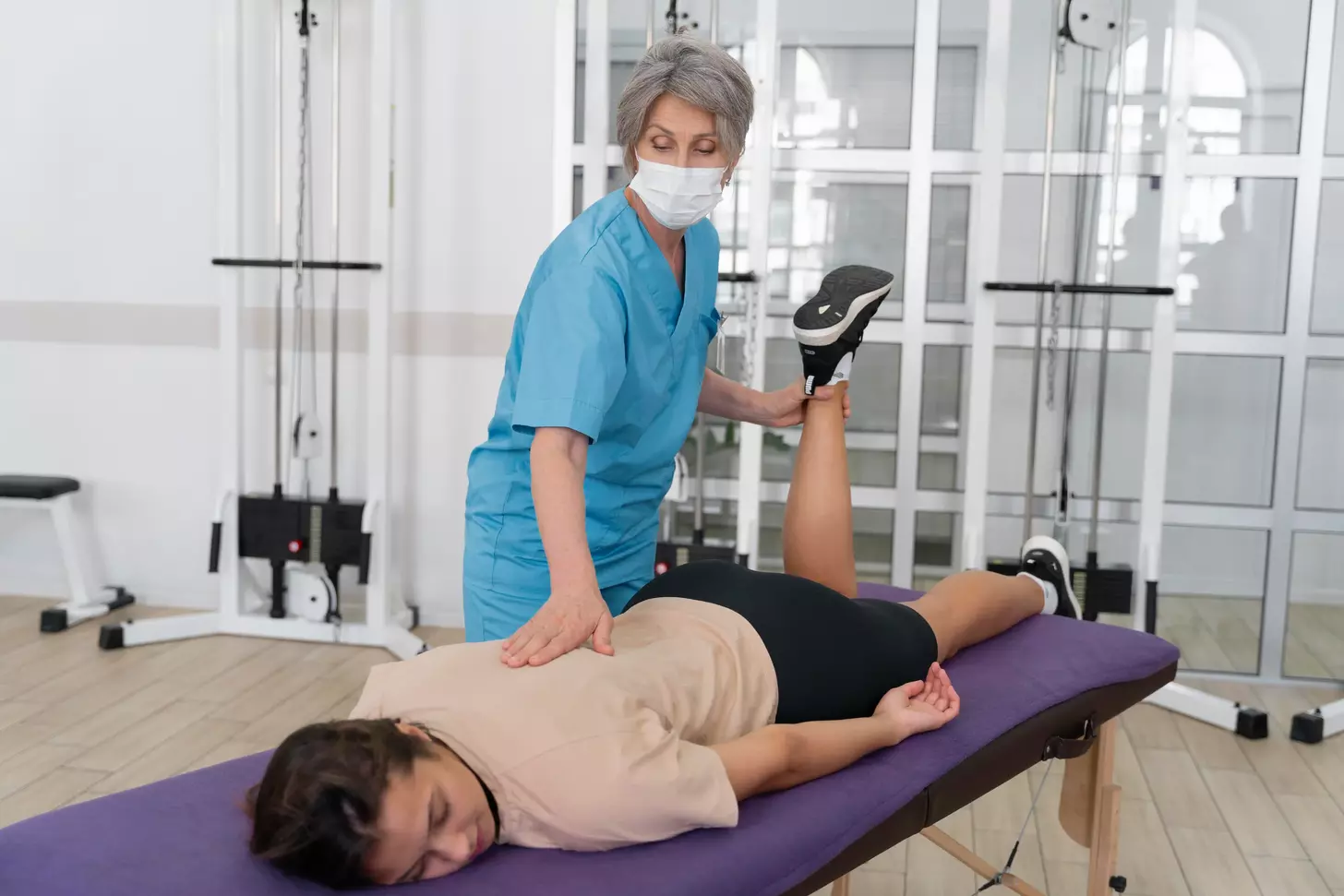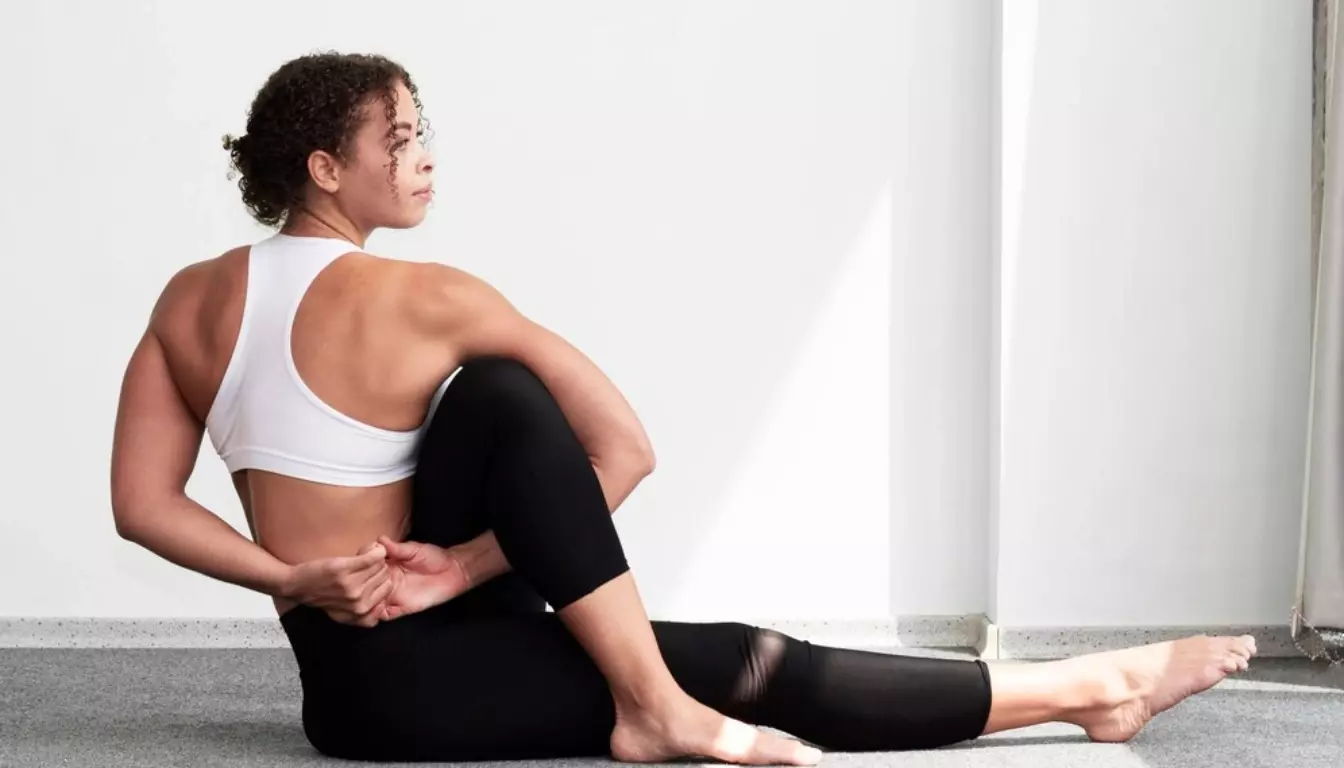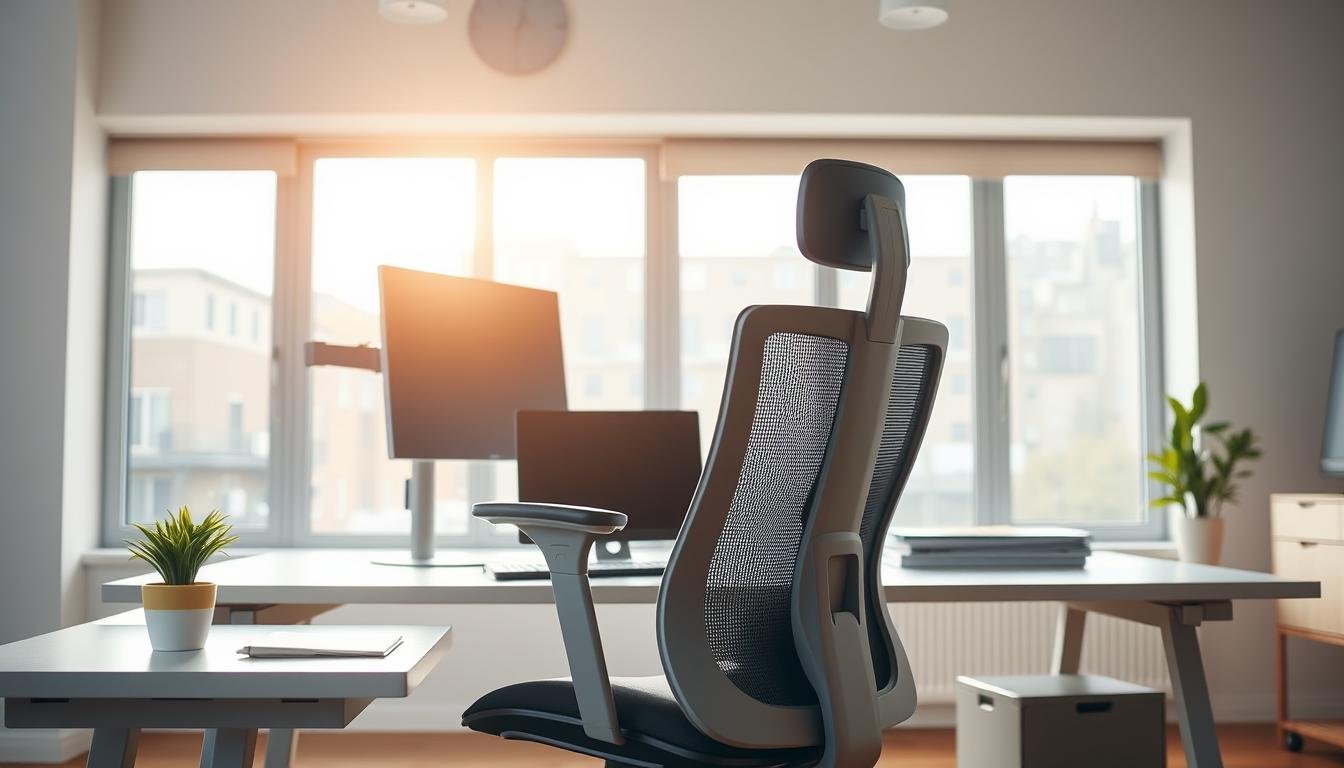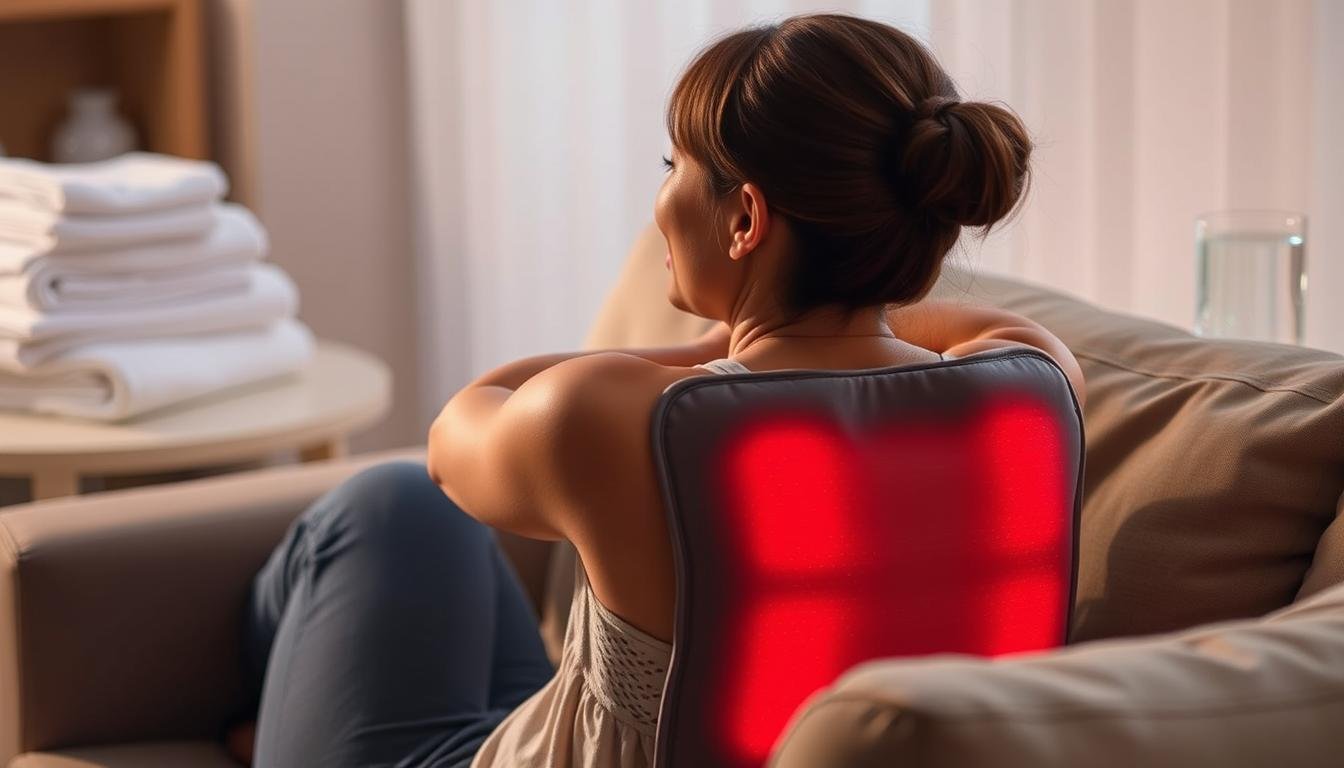Back pain can be a real struggle. I’ve found relief through targeted exercises and want to share my experience. This guide offers techniques from gentle stretches to core-strengthening workouts.
You’ll find helpful info to ease pain and boost spine health. These exercises have helped me and many others. They’ll give you tools to manage your recovery.
Let’s explore exercises for back pain relief together. With the right approach and regular practice, you can improve your back health. You’ll be on your way to a stronger, more comfortable back.
Understanding the Root Causes of Back Pain
Back pain affects millions worldwide, stemming from various sources. Uncovering these primary factors is key to effective posture correction exercises. An ergonomic desk setup can also help alleviate this common ailment.
Common Lifestyle Factors Contributing to Back Pain
Daily habits significantly impact back health. Prolonged sitting, inactivity, and poor lifting techniques are major culprits. An ergonomic desk setup can greatly benefit those who work long hours.
- Sedentary lifestyle
- Incorrect lifting techniques
- Obesity
- Smoking
Medical Conditions Associated with Back Pain
Underlying medical issues can cause persistent back pain. These range from structural problems to inflammatory diseases.
| Condition | Description |
|---|---|
| Herniated Disc | Rupture of the cushioning discs between vertebrae |
| Sciatica | Compression of the sciatic nerve causes lower back and leg pain |
| Osteoarthritis | Wear and tear of the spine’s joints |
| Fibromyalgia | Widespread musculoskeletal pain and fatigue |
Impact of Poor Posture on Spine Health
Poor posture silently harms spine health. Maintaining proper alignment is crucial for preventing back pain. Posture correction exercises can greatly improve spine health and reduce discomfort.
- Increased stress on spinal ligaments
- Muscle strain and fatigue
- Misalignment of the spine’s natural curvature
- Reduced flexibility and range of motion
Addressing these root causes through lifestyle changes can significantly improve spine health. Proper ergonomics and targeted exercises are key steps towards alleviating back pain.
Back Pain Relief Exercises for Daily Practice
I’ve found exercises that can greatly reduce back pain. These routines have helped me and my clients find relief. Let’s explore some effective techniques for your daily life.
Gentle Morning Stretching Routines
Begin your day with gentle stretches to ease stiffness. Try the cat-cow stretch. Get on all fours and arch your back upward like a cat.
Then, drop your belly towards the floor. This simple move can loosen tight muscles and prepare your spine.
Core Strengthening Movements
Strong core muscles support your spine and improve posture. The plank is a great core-strengthening workout. Hold a push-up position for 30 seconds.
Focus on keeping your body straight. This exercise works multiple muscle groups without straining your back.
Low-Impact Flexibility Exercises
Improving flexibility can reduce back pain. Try the knee-to-chest stretch. Lie on your back and gently pull one knee towards your chest.
Hold for 30 seconds, then repeat with the other leg. This stretch targets lower back muscles without stressing your spine.
- Perform each exercise 5-10 times.
- Listen to your body and stop if you feel pain
- Consistency is key for long-term relief
These core strengthening workouts and lower back stretches work best when done regularly. Start slowly and increase intensity as you get stronger.
Professional Techniques for Spine Decompression

Spine decompression techniques can be a game-changer for back pain relief. These methods aim to ease pressure on the spine. They offer respite from various types of discomfort.
One effective technique is using an inversion table. By hanging upside down at a gentle angle, you can experience significant relief. This method lets gravity naturally stretch the spine, creating space between vertebrae.
For equipment-free options, try simple hanging exercises. Find a sturdy bar and hang with your feet off the ground. Do this for 30 seconds to a minute to help decompress your spine.
Back pain relief exercises include the cat-cow stretch and child’s pose. These gentle movements help elongate the spine and relieve pressure. Practice these daily as part of your back care routine.
| Decompression Technique | Equipment Needed | Difficulty Level |
|---|---|---|
| Inversion Table | Inversion Table | Intermediate |
| Hanging Exercise | Sturdy Bar | Beginner |
| Cat-Cow Stretch | None | Beginner |
| Child’s Pose | Yoga Mat | Beginner |
Always consult a healthcare professional before trying new spine decompression techniques. They can provide personalized advice based on your specific condition and needs.
Yoga Poses and Stretches for Chronic Back Pain

Yoga has transformed my approach to managing chronic back pain. Regular practice of specific poses and stretches has brought me significant relief. Here are some techniques that have improved my comfort and flexibility.
Beginner-Friendly Yoga Sequences
New to yoga? Start with gentle poses targeting the back muscles. The Cat-Cow stretch is perfect for warming up your spine. Follow with Child’s Pose to stretch your back and ease tension.
End your routine with a gentle twist. This will help improve your spinal mobility.
Therapeutic Breathing Techniques

Breathing exercises can significantly reduce back pain. Deep belly breathing helps relax tense muscles and lessen discomfort. Try this simple technique:
Lie on your back. Place one hand on your chest, the other on your belly. Breathe deeply, focusing on expanding your belly as you inhale.
Modified Poses for Different Pain Levels
Listen to your body and adjust poses as needed. If a forward fold is too intense, try it with bent knees. You can also do it while seated in a chair.
Use props like blocks or bolsters when doing lower back stretches. These support your body and prevent strain.
Consistency is crucial for back pain relief through yoga. Begin with short, daily sessions. Gradually increase duration as your strength and flexibility improve.
Always check with a healthcare professional before starting a new exercise routine. This is especially important if you have chronic back pain.
Ergonomic Solutions and Posture Correction Methods

Ergonomic solutions and posture correction exercises can significantly reduce back pain. Proper alignment techniques and an optimized workspace have greatly improved my comfort level.
These changes have brought noticeable relief to my daily life. I’ve experienced less discomfort and increased productivity throughout my workday.
Proper Sitting and Standing Alignment
Good posture is key to preventing back strain. When sitting, I keep my feet flat and knees at 90 degrees.
I ensure my back is supported against the chair. For standing, I focus on keeping my shoulders back and chin tucked.
I also distribute my weight evenly on both feet. These small adjustments have made a big difference in my comfort.
Workspace Setup Optimization
An ergonomic desk setup has been a game-changer for me. I position my computer monitor at eye level for optimal viewing.
My keyboard and mouse are within easy reach. This arrangement minimizes strain on my neck and shoulders during long work sessions.
Posture-Supporting Equipment Recommendations
The right equipment can greatly improve posture and comfort. I use an adjustable chair with lumbar support for proper back alignment.
A standing desk allows me to alternate between sitting and standing. A footrest and ergonomic keyboard have also helped reduce discomfort.
- Adjustable chair with lumbar support
- Standing desk or desk converter
- Ergonomic keyboard and mouse
- Monitor stand or arm
- Footrest for seated work
Regular use of these ergonomic solutions has improved my back health. I’ve noticed positive changes in my overall well-being too.
Practicing posture correction exercises consistently has been key. These small changes have made a big impact on my daily comfort.
Complementary Therapies for Back Pain Management

Exercises are vital for back pain relief, but complementary therapies can boost healing. Heat therapy has been a game-changer in my recovery. It soothes muscle tension and stiffness, increasing blood flow to the affected area.
Targeted massage techniques have greatly helped my pain management routine. I’ve learned simple self-massage at home, focusing on pressure points. For intensive treatment, I visit a professional massage therapist specializing in back pain relief.
Acupuncture has been a valuable addition to my treatment plan. Tiny needles placed at specific points help alleviate pain and promote wellness. Combining acupuncture with regular exercise yields the best results for me.
Chiropractic care and physical therapy have provided extra support in my recovery. These professionals offer hands-on treatments and personalized exercise programs. By combining these approaches, I’ve created an effective strategy for managing my back pain.
Lifestyle Modifications to Support Recovery

Key lifestyle changes can greatly improve back health and support recovery. Adjusting daily habits has helped me reduce pain and prevent future issues. Let’s explore some effective modifications that have worked for me.
Sleep Position Adjustments
Changing my sleep position has eased my back pain significantly. I use a pillow between my knees when sleeping on my side. This keeps my spine aligned and reduces pressure on my lower back.
Back sleepers can place a small pillow under their knees. This helps maintain the natural curve of the spine during sleep.
Daily Movement Patterns
I’ve found ways to stay active, even with a desk job. I take short walks every hour and do simple exercises at my desk. These include shoulder rolls, gentle twists, and seated leg lifts.
I also make sure to stand up and stretch regularly throughout the day. This helps prevent stiffness and promotes better posture.
Stress Management Techniques
Reducing stress has been crucial in managing my back pain. I practice deep breathing exercises and meditation daily. Taking time for relaxation activities has also helped lower my stress levels.
Reading or listening to calming music eases muscle tension. These simple practices have made a big difference in my overall comfort.
| Lifestyle Change | Benefit |
|---|---|
| Anti-inflammatory diet | Reduces inflammation, eases pain |
| Posture correction exercises | Improves alignment, strengthens muscles |
| Regular sleep schedule | Enhances recovery, reduces fatigue |
| Stress reduction | Decreases muscle tension, promotes relaxation |
Adopting an anti-inflammatory diet has been a game-changer for me. I’ve increased my intake of fruits, vegetables, and omega-3-rich foods. Cutting back on processed items has noticeably reduced my overall inflammation and pain levels.
Conclusion
This guide offers valuable insights on back pain relief exercises and core strengthening workouts. Consistent practice can significantly improve your back’s condition. Your workspace setup and daily habits also play crucial roles in back health.
Healing is a gradual process, so be patient with yourself. Pay attention to your body’s signals during these exercises. If something feels off, stop and consult a healthcare professional.
Everyone’s journey to a healthier back is unique. By combining expert advice with personal dedication, you’re on the right track. These changes can lead to a more active, pain-free life.
Keep up your efforts, and you’ll likely see improvements in your mobility and comfort. Your path to a stronger back begins now. I’m cheering for your success!
FAQ
How often should I perform back pain relief exercises?
Do back pain relief exercises daily, especially in the morning to ease stiffness. Start with 10-15 minutes and gradually increase to 30 minutes. Consistency is key for long-term relief.
Can I do these exercises if I have acute back pain?
Consult a healthcare professional before starting any exercise routine with acute back pain. Gentle stretches and core strengthening workouts can be beneficial. Listen to your body and avoid movements that cause pain.
What are some effective spine decompression techniques I can do at home?
Effective at-home spine decompression techniques include hanging from a pull-up bar and performing cat-cow stretches. Using an inversion table can also help if you have access to one. Start gently and progress slowly to avoid injury.
How long does it typically take to see results from back pain relief exercises?
You may feel some relief within a few days of consistent practice. Significant improvements usually take 4-6 weeks of regular exercise. Everyone’s recovery timeline is different, so be patient with your progress.
Is yoga for back pain suitable for beginners?
Many yoga poses can be modified for beginners and those with back pain. Start with gentle poses like Child’s Pose, Cat-Cow, and Sphinx Pose. Inform your yoga instructor about your back pain for appropriate modifications.
What’s the best sleeping position for back pain relief?
Sleep on your back with a pillow under your knees. Alternatively, sleep on your side with a pillow between your knees. These positions help maintain proper spine alignment during sleep.
How can I improve my posture correction throughout the day?
Set reminders to check and adjust your posture every hour. Practice sitting and standing with your shoulders back, chin tucked, and core engaged. Using a standing desk or ergonomic chair can help maintain good posture.
Are there any specific exercises I should avoid if I have back pain?
Generally, avoid high-impact exercises, heavy lifting, and toe touches from a standing position. Focus on low-impact activities and exercises that strengthen your core. These exercises should not strain your back.
How can I incorporate heat therapy for back pain into my routine?
Use a heating pad for 15-20 minutes before exercising to loosen muscles. Take a warm bath after your workout to soothe sore muscles. Always use a barrier between the heat source and your skin to prevent burns.
What are some targeted massage techniques I can try at home?
Use a foam roller or tennis ball to gently massage tight areas in your back. Focus on rolling out your lower back, upper back, and along the spine. Start with light pressure and increase as tolerated.
Disclaimer: This information is for educational purposes only and is not a substitute for medical advice. Always consult a medical professional before starting pain treatments to ensure they are suitable for your individual needs.






